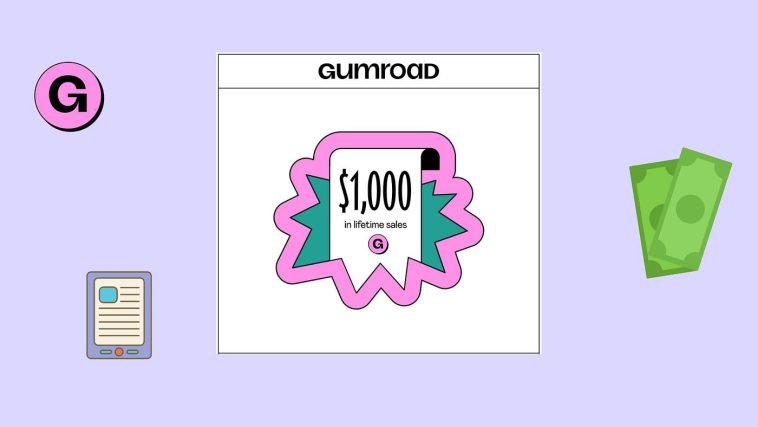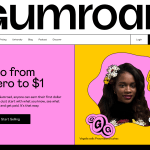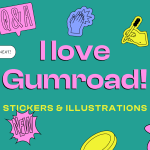Pricing is one of the trickiest parts of selling anything online. Set your price too high, and people hesitate to buy. Set it too low, and you risk undervaluing your work—or worse, earning less than you deserve.
When it comes to selling on Gumroad, this balance is especially important because your pricing directly affects how your audience perceives your product and your brand.
Over the past few years, Gumroad has become one of the go-to platforms for creators selling digital products—courses, templates, eBooks, presets, and more.
But while creating a product may take weeks, pricing it often gets decided in minutes. That’s a problem, because the right price can make or break your success.
In this post, I’ll walk you through how to find the sweet spot—a price that reflects the value of your product, feels fair to your audience, and maximizes your revenue potential.
Step 1: Understand Your Product’s True Value
Before choosing a price, take a moment to think about what your product actually offers. Ask yourself:
What problem does it solve?
How much time, stress, or money does it save people?
Is it a quick fix or a long-term transformation?
For example, a $10 Notion template that helps freelancers manage clients more efficiently might save someone several hours a week. That’s real value—and it’s worth more than just a few dollars.
I’ve noticed that creators often underprice their products because they assume people won’t pay more. The truth is, people don’t just pay for the file—they pay for the result. The clearer that result is, the higher you can price.
If your Gumroad product helps people make money, save time, or learn something valuable, you can confidently set a higher price.
Step 2: Research What Similar Products Cost
Next, check what others in your niche are charging. You can browse Gumroad’s Discover section or look up your competitors’ product pages. Pay attention to:
The type of product (eBook, course, template, etc.)
The depth and quality of content
What bonuses or extras they include
The creator’s experience and reputation
This isn’t about copying someone else’s pricing—it’s about understanding the range your audience already expects.
Let’s say you’re selling a Notion template for project management. If similar templates range from $10 to $30, you already know your price shouldn’t stray too far outside that window unless you offer significantly more value (like personalized support or lifetime updates).
Step 3: Decide Between One-Time or “Pay What You Want” Pricing
Gumroad offers flexible pricing models, which is one of its best features. You can choose a fixed price or a pay-what-you-want (PWYW) model.
Here’s how each one works best:
Fixed Price: Ideal for straightforward products where you know exactly what it’s worth (like an eBook, template, or preset pack). It gives clarity and consistency.
Pay What You Want: Great for community-focused products or when you want to encourage accessibility. It allows fans to support you at a higher price if they choose.
Many creators set a minimum price (say, $5) and let buyers pay more if they’d like. You’d be surprised—some people genuinely pay more to support creators they love.
If you’re just starting out or testing a new product, PWYW can help you gather data on what people want to pay. Later, you can switch to a fixed price based on those insights.
Step 4: Test Different Price Points
You don’t have to stick with one price forever. Gumroad lets you update your pricing anytime, which makes it perfect for experimentation.
Here’s a simple way to test:
Start low to attract early buyers and gather feedback.
Raise your price gradually as you improve the product or add bonuses.
Track conversion rates (views vs. sales) after each change.
For example, if you start selling a digital guide at $15 and it gets a 10% conversion rate, try raising it to $20. If conversions stay strong, that’s a good sign your audience values it more than you thought.
You can also run limited-time discounts to test perceived value. If sales spike only when the product is discounted, your base price may be slightly too high—or you need to communicate its value better.
Step 5: Communicate the Value Clearly
Sometimes, it’s not your price that’s the problem—it’s how you present it.
People are more likely to pay your asking price if they understand exactly what they’ll get and how it will improve their life. So make sure your Gumroad product page includes:
A clear headline: Focus on the outcome (“Build a Personal Finance System That Actually Works”).
Benefit-driven description: Explain what users will gain, not just what’s inside.
Social proof: Include reviews, testimonials, or screenshots.
Bonuses or extras: Even small additions like “free updates” or “bonus templates” can make your price feel more justified.
Your product page is your silent salesperson. If it builds trust, communicates value, and looks professional, people will be far less price-sensitive.
Step 6: Consider the Psychology of Pricing
Small details can make a big difference. Pricing psychology isn’t about manipulation—it’s about presenting your price in a way that feels natural and appealing.
Here are a few tricks that often work well on Gumroad:
Charm pricing: Prices ending in .99 or .97 ($19.99 instead of $20) often convert better.
Tiered pricing: Offer different versions of your product—Basic, Standard, and Premium. It gives people options and often nudges them toward the middle tier.
Anchoring: Display your “original” price next to your discounted one (e.g., “$50 → Now $29”). It makes the deal more attractive.
Social proof pricing: If hundreds of people have already bought your product, show that number. It builds confidence.
These subtle techniques can improve conversions without changing the actual value of your product.
Step 7: Adjust Over Time
Pricing isn’t a one-time decision. As your audience grows or your product improves, your pricing should evolve too.
If you’ve added new modules to your course, updated your template, or built a loyal following, your price should reflect that progress.
Many successful Gumroad creators gradually raise their prices as their reputation grows—and their audience gladly pays more.
You can also create seasonal offers or bundle deals to keep things fresh. The goal isn’t to constantly discount, but to show that your product is alive and always improving.
FAQs
How do I know if my Gumroad product is overpriced?
If people visit your page but don’t buy, it might be overpriced or under-explained. Before lowering the price, make sure your product description clearly shows its value and benefits.
Should I ever offer my Gumroad product for free?
Yes, if your goal is to build trust or grow your audience. Offering a free version (like a “lite” version of your product) can attract new followers who may later buy your paid products.
How often should I change my pricing?
Not too frequently. Wait until you’ve gathered enough sales data—at least a few dozen transactions—before making any big adjustments.
What’s the best price range for Gumroad products?
It depends on your niche, but most digital products on Gumroad fall between $10–$100. Templates and eBooks usually land under $30, while video courses or coaching materials often range from $50 to $200+.
Final Thoughts
Pricing your Gumroad products right isn’t about guessing—it’s about understanding your audience, testing, and communicating value clearly.
The perfect price sits at the intersection of what your product is worth and what your audience is willing to pay.
Take your time, test different approaches, and don’t be afraid to charge what your work deserves. People respect creators who believe in their own value.
So, what’s one Gumroad product you’ve been holding back on releasing because you’re unsure about the price? Maybe it’s time to test it out—you might be surprised by what people are willing to pay.





GIPHY App Key not set. Please check settings